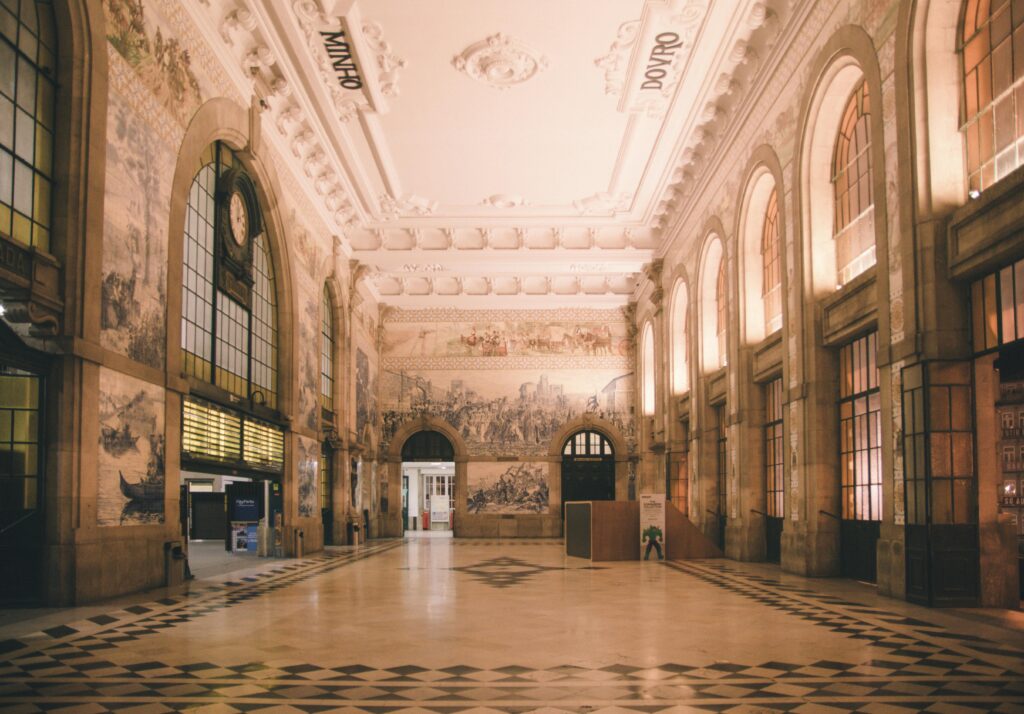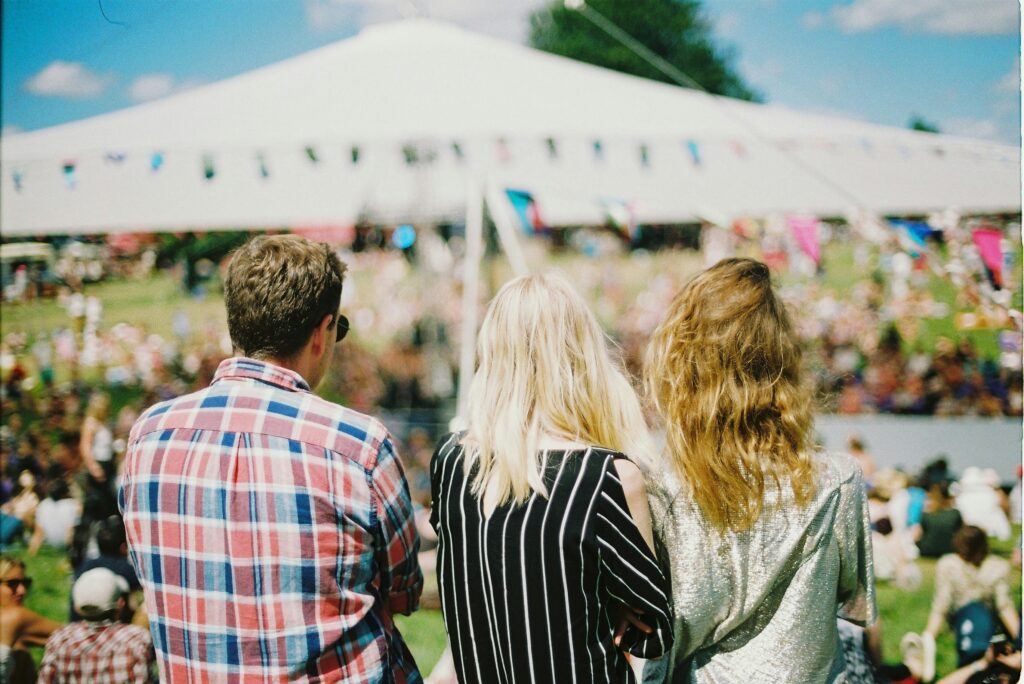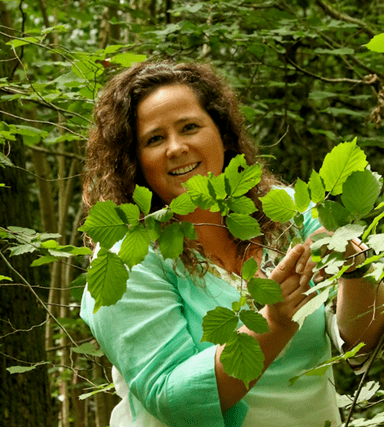
Why Porto should be your next choice for a city break…

By Hannah Burns: Columnist
Eclectic, overflowing with culture, food, wine, and incredible architecture, Porto is a fantastic choice for a varied city break that exceeds expectations.
Often overshadowed by its bigger cousin Lisbon, Porto is the second largest city in Portugal. Its atmosphere is buzzing, the twisting streets bustle with tourists and locals alike, all making their way through the jigsaw-like tapestry of terracotta roofs.
The 2023 winner of Europe’s Leading City Break, and also boasting three wins of European Best Destination (2012, 2014, 2017) Porto definitely has the experts’ approval as a must-visit city.
Just a short two and a half hour (and relatively inexpensive) flight from London and you can step out into that sweet blast of holiday heat, and start to explore Porto in no time at all.
So why choose Porto? What is there to do? To see?
Whilst it may not be a familiar location to many, this article is here to guide you through the core attractions of this city break, we’ll touch on the history, culture, places to visit and food to eat. And, of course, where to drink port!

A brief history of the city of Porto and its people
Firstly let’s take a quick dive into the history of Porto…
Perched on the bank of the Douro River, Porto is a city dripping with history. Recognised as a UNESCO heritage site since 1996, its origins date to nearly 2000 years ago in Roman times, where it served as a key port between the cities now known as Lisbon and Braga. It is said that Portugal’s name itself evolved from Porto’s ancient Latin name, Portus Cale.
Today nicknamed Cidade Invicta (Invincible City), Porto and its citizens are historically regarded as being at the forefront of the movement fighting for constitutional rights in Portugal. Weathering a series of political upheavals, and absolutist monarchical reigns, Porto once withstood a siege for 18 months straight, hence achieving the accolade Invicta.
This individualism and passion continues today in the dynamic of the city, the people are friendly, proud and open with what they say (in the most charming sentiment). Be prepared for big smiles, friendly faces and help with your Portuguese pronunciation as you attempt to order a cool cerveja (beer) in the warm evening sun.
Head on down to Soares dos Reis National Museum if you want to learn more about the history of Portugal through art. The oldest public museum in the country, founded in 1833, Soares dos Reis hosts an impressive array of works from famous Portuguese artists such as Henrique Pousão, Silva Porto and António Carneiro.
There are two gardens to explore, with sculptures complimenting the fine-clipped lawns and 19th century architecture. The museum also hosts temporary exhibitions, the details of which can be found on their site. Easily accessible by walking, the metro, or taxi, it’s an essential for art and history lovers alike.
So, a rich history and lively locals lay the foundation of Porto’s appeal. Want to put some specific pins on the map to pop by? Read on.

Important sights to stop by in Porto
The historical commercial trade links have left a footprint on the Porto city-scape today, with varying architectural delights lying just a stone’s throw from each other.
Just stroll through the historic centre and you’ll stumble upon Cathedrals, monuments and charming mediaeval edifices without even trying, from the ‘cathedral with its Romanesque choir to the neoclassical Stock Exchange and the typically Portuguese Manueline-style Church of Santa Clara’ all of which are a ‘remarkable testimony’ (UNESCO) to its roots as a port.
If you’re stuck on where to wander, the historic centre is the best place to start. Don’t be scared by the hills – there are plenty of cosy cafes and vibey bars in the winding avenues to stop at and rest your weary legs.
If flying into Porto you are likely to arrive by taxi from the north of the city. One of the first stops you should make is to head down to the south, to the Ponte Luís I bridge, which links Porto to its sister city across the river, Gaia.
Whilst the bridge itself is an impressive feat of architecture, with a huge steely arch sweeping over the blue Douro below, the real reason you want to go is for the full-vista view of Porto.
Walk across the bridge towards Gaia, as the metro-line clutters past in intervals.
Then, (and make sure you wait until the end) turn back.

In front of you lies the impressive orange irregularity and magnificence of Porto, the ancient buildings stacked up on the bank, contrasting with the aqua river.
Make sure to take pictures and soak up the sight. Down below, closer to the water, you can see the port bodegas, where the sweet wine is aged and stored. You may also notice the traffic on the water, if you wish to gain a perspective of the city from below, there are boat trips available.
Feel like seeing more of the city?

Clérígos Tower rises 75 metres high, giving a sweeping panoramic view.
If you time it cleverly (depending on the time of year) you can coincide your climb with sunset, guaranteeing a spectacular end to the day.
Tiled houses are a common sight across Portugal, but somehow this spot is special.
Most of the top sites, as mentioned earlier, are clustered around the centre, thus within a quick walking distance from each other. The Porto Cathedral of course is a great visit, however, the São Bento Train Station is completely unmissable. Decorated with over 20,000 tiles, a blue-white mosaic decorates the station walls echoing the history of Portugal, referencing the wars and turmoil of the past.
Tiled houses are a common sight across Portugal, but somehow this spot is special. Being surrounded by sky high illustrations, you feel as if inside an ornate china bowl, it is truly a feast for the eyes.
Talking about feasts, what about the food in Porto?
“Portuguese is cheerful and sweet, like a language of birds.” – Paulo Rónai
The Culinary Scene in Porto
Aptly put by Gillan, ‘Portugal’s second city is sending out a siren call to food enthusiasts far and wide.’ via the increasing number of up-market restaurants, tasting menus, and fine dining.
Staying true to its roots, fish and seafood form the core of the cuisine, with ‘bacalhau’ (dried and salted cod) a mainstay ingredient in many dishes. If you’re looking for an easy evening meal, stroll around the Ribiera area, next to the river, and pick from the abundance of top-rate restaurants that hang over the bank, with the fantastic views of the Douro. Terra Nova or Casario are a both fantastic choices.
For even finer dining, be sure to check out Euskalduna. A Michelin-starred restaurant, with a changing seasonal menu, this location is a firm favourite with food critics. It’s recommended that you book in advance as reservations fill up due to its popularity.
With a degustation menu that includes ten courses, it’s an intimate setting with an open kitchen so you can hear the sounds of the chefs, food sizzling, and smell the wafts of cooking in the air.
Atmospheric and high-quality, Vasco Coelho Santos, the mastermind behind Euskalduna also likes to incorporate ‘surprise[s]’ throughout the night. What are they? You’ll have to go and find out for yourself.
Want to try some more authentic options too?
Did you know that the people of Porto are known by the name ‘tripeiros’, originating from the dish ‘tripas à moda do Porto’? That’s right, if you haven’t guessed it yet, tripe is a popular dish in Porto, so much so the inhabitants are named after it!
Not for you? Well don’t worry, tripe isn’t everyone’s cup of tea, but there’s another classic Porto dish that might be more up your street, the humble ‘francesinha’.
This sandwich, layered with steak and ham AND sausage is then covered with cheese, and topped with a gravy-like sauce (choose the spicy option!). It normally comes with chips, and if you’re feeling really hungry you can add an egg on top.
This sandwich will see you through a whole day of intense city-break activities, it’s heavy, filling, indulgent and decadent. Lado B Cafe claims to serve the best francesinha in the world, it’s an un-fussy efficient restaurant, and has a variety of sandwiches available.
Finally, if you have time, swing by Mercado do Bolhão, which, like any market, is a river of people all buying, trying and haggling in a semi-chaotic setting. Try the cheeses, meats, fish and other fresh food on offer. You won’t regret it, and it certainly makes you feel like part of the fabric of Porto.
Now last, but not least – the port!
-USEFUL LINKS
CAVES CALEM, Avenida Diogo Leite, 344 Vila Nova de Gaia. Tel: +351 916 113 451 / tour@calem.pt . EUSKALDUNA STUDIO,Rua Santo Ildefonso 404, Porto, 4000-466, Portugal. Tel:+351 935 335 301
Cover Photo: Julie Aagaard

Hannah Burns
Hannah Burns is a freelance writer who works doing a bit of everything, from copy to creative writing. She's particularly interested in what makes humans tick, the behaviour, beliefs and lives of others. In her spare time she works on her blog, goes to funk music events and learns Spanish.

















